You would like to think that experts in the entertainment industry would know that certain movies were bound to fail, but hindsight is always perfect. With the overabundance of options these days, where a half-dozen movies can open together over one weekend, there is more pressure than ever to assemble the right casting, writing, directing, marketing, and timing for a movie to make money.
However, these ones did not, for different reasons. To make this list, I compared every movie with a production budget over $100 million against its worldwide gross ticket sales. To be successful, it is claimed that a movie should make twice its production budget in worldwide sales. There have been 20 movies that couldn’t even recoup the budget once. These are the 9 lowest percentage returns of budget in American movie history, in reverse order:
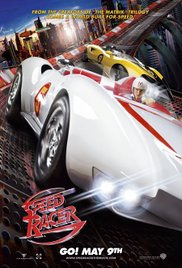 9. Speed Racer (2008)
9. Speed Racer (2008)
Budget: $120 million
Worldwide Gross: $93.4 million
Rotten Tomatoes Audience Score: 60%
Synopsis: A young driver, Speed Racer, aspires to be champion of the racing world with the help of his family and his high-tech Mach 5 automobile.
Where it went wrong: Lilly and Lana Wachowski are some interesting ladies to say the least, but not many can fault them for not having a touch of creative genius. They wrote and directed The Matrix and its sequels, and are currently responsible for the popular Netflix series Sense8.
In the summer of 2008, the Wachowski Brothers (as they are collectively known) dusted off this 1960’s cartoon and adapted it for the big screen. It was a risky proposition right away; this series wasn’t as popular as other cartoon adaptations from that period, and the movies on those other cartoons didn’t perform well. Less popular cartoons, such as Thunderbirds and Josie and the Pussycats had already failed in their transition to theaters. On top of that, car racing movies have not done well in the box office. The marketing for this movie pushed the video game look with its frenetic pace and colors, but didn’t draw the viewer in with the promise of a story. I like Emile Hirsch and Christina Ricci from other roles, but the cast wasn’t about to draw in big numbers. The movie recovered a bit when released globally, because the production caters a bit to the Far East entertainment culture. It just didn’t do well enough in America to make money.
 8. Windtalkers (2002)
8. Windtalkers (2002)
Budget: $115 million
Worldwide Gross: $77.6 million
Rotten Tomatoes Audience Score: 50%
Synopsis: Two U.S. Marines in WWII are assigned to protect Navajo Marines who use their native language as an unbreakable radio cypher.
Where it went wrong: This sounds like a pretty good premise, does it not? It reminds me of The Imitation Game, which was an excellent flick; WWII movies started making a comeback in a big way after Saving Private Ryan came out. There needs to be action, emotion, and accuracy to make these movies work.
This is where the movie went wrong. Nicolas Cage is not exactly the King of Feelers, and every time he tries to be emotional, it just appears silly. In addition, by many accounts, the accuracy of this movie is suspect. While a lot of combat footage is well done, it appears that Nicolas Cage won WWII all by himself. Shouldn’t the focus have been the code talkers? Regardless, a movie can’t rely on effects alone. It takes a decent opening weekend and some word-of-mouth. The decent opening weekend happened, but with the issues discussed here, I can imagine no one gushed about it to their friends. The numbers went downhill quickly, and the movie fell short of budget. Mark down another flop for Nicolas Cage during a down period in his career.
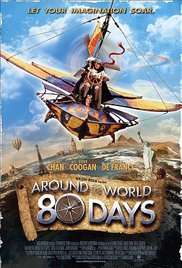 7. Around the World in 80 Days (2004)
7. Around the World in 80 Days (2004)
Budget: $110 million
Worldwide Gross: $72 million
Rotten Tomatoes Audience Score: 34%
Synopsis: To win a bet, an eccentric British inventor beside his Chinese valet and an aspiring French artist, embarks on a trip full of adventures and dangers around the world in exactly 80 days.
Where it went wrong: Casting Jackie Chan puts a lot of pressure on everyone involved in a movie. The writer is under pressure to create a great script around a superstar. The director has to make sure the fight scenes are as expected, and just don’t detract from them. The other actors are naturally going to be slightly ignored in comparison to Jackie, so a lesser actor might overdo his part in compensation. For this movie, those possibilities were realized.
The script was a bit mindless, a bit forgettable. The director created a film with a Disney feel, and it’s not a great thing when Jackie spends too much time being silly. Steve Coogan, normally a great comedic actor, was a little over the top. Additionally, the CGI was not helpful. Over time, Jackie’s American movies have been hit or miss, and unfortunately, this one was a miss. Being able to generate a few laughs and some decent fight scenes is not going to be enough for success.
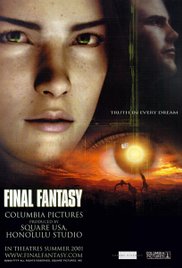 6. Final Fantasy: The Spirits Within (2001)
6. Final Fantasy: The Spirits Within (2001)
Budget: $137 million
Worldwide Gross: $85.1 million
Rotten Tomatoes Audience Score: 48%
Synopsis: A scientist makes a last stand on Earth with the help of a ragtag team of soldiers against an invasion of alien phantoms.
Where it went wrong: This movie was the first feature-length motion picture to use computer-generated imagery to create not only effects, props, and environments but also the human cast members themselves. The cast is good, but most animated movies tend to have good casts.
A movie made completely with CGI has an automatic shortcomings, however. It excludes a large set of the population that are not interested in the cinematics. If it’s not a kids movie, patrons want to feel emotions portrayed by actors and actresses, and CGI characters often lack an emotional expression. Since this was the first completed film like this, the emotional aspect was a strong negative. It was just too unconvincing. Without a wide appeal, the movie will likely not bring about a large return on investment with a budget as large as this one.
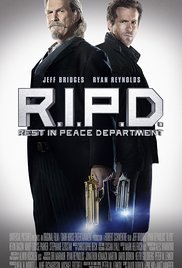 5. R.I.P.D. (2013)
5. R.I.P.D. (2013)
Budget: $130 million
Worldwide Gross: $79.1 million
Rotten Tomatoes Audience Score: 38%
Synopsis: A recently slain cop joins a team of undead police officers working for the Rest in Peace Department and tries to find the man who murdered him.
Where it went wrong: The premise here was outstanding, Jeff Bridges was making his first appearance since True Grit, and Ryan Reynolds has made some really good movies both before and after this one. R.I.P.D., however, was his lowest rated movie, according to the Rotten Tomatoes Critics Tomato-meter. What happened?
The movie itself wasn’t all that bad, though it was a little disappointing considering how much ass I thought it would kick. The story fell a little flat and had a few holes. The action effects were pretty good, although as a summer extravaganza, it did not meet expectations. Some of the visuals were a little hokey. All those things pale in comparison, though, to the competition this movie had. The Conjuring crushed in its opening weekend, right across the theater from this movie. There were multiple kids movies out, and Red 2 challenged R.I.P.D. for action movie supremacy. It was just an unfortunate flop that it may not have entirely deserved.
 4. Stealth (2005)
4. Stealth (2005)
Budget: $135 million
Worldwide Gross: $76.4 million
Rotten Tomatoes Audience Score: 40%
Synopsis: Deeply ensconced in a top-secret military program, three pilots struggle to bring an artificial intelligence program under control before it initiates the next world war.
Where it went wrong: The story line of action movies without much plot was a tired concept even then. The movie is filled with stereotypes for each of the main characters. There were so many cutaways during the action scenes that you may lose your lunch with all the spinning. It’s more like a very loud video game.
Let me clear up any misconceptions, though. Jamie Foxx does what Jamie Foxx does. Josh Lucas does what Josh Lucas does. Jessica Biel…well, I’ll carry a torch for her until the day I die. If you want a steroid-fueled remake of Top Gun with more explosions and outrageous characters, you’ll probably be in that 40% of the audience that dug it.
 3. The 13th Warrior (1999)
3. The 13th Warrior (1999)
Budget: $125-160 million
Worldwide Gross: $61.7 million
Rotten Tomatoes Audience Score: 65%
Synopsis: A man, having fallen in love with the wrong woman, is sent by the sultan himself on a diplomatic mission to a distant land as an ambassador. Stopping at a Viking village port to restock on supplies, he finds himself unwittingly embroiled on a quest to banish a mysterious threat in a distant Viking land.
Where it went wrong: If you ask the audiences, it didn’t. However, the box office reflects how many people went to see the movie in the theater. Antonio Banderas (not to be confused with Benicio del Toro in this commercial), fresh off The Mask of Zorro, went from the safe picture to the art picture, following Ben Affleck’s classic career advice. Wow, was this an art picture. I feel asleep twice reading the synopsis. Unless he’s dancing the tango during this picture, I’m not into it. I must not be alone, because not enough people could be dragged to the theater. However, those that were found it entertaining.
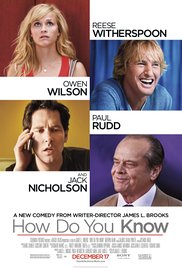 2. How Do You Know (2010)
2. How Do You Know (2010)
Budget: $120 million
Worldwide Gross: $49.6 million
Rotten Tomatoes Audience Score: 25%
Synopsis: After being cut from the USA softball team and feeling a bit past her prime, Lisa finds herself evaluating her life and in the middle of a love triangle, as a corporate guy in crisis competes with her current, baseball-playing beau.
Where it went wrong: This cast was nominated by the Casting Society of America for an award in 2011 for the…wait for it…Outstanding Achievement in Casting. It is, indeed, a great cast. Two Academy Award winners in Reese Witherspoon and Jack Nicholson. Owen Wilson and Paul Rudd are fan favorites. It didn’t seem to be the cast.
It might be the story line. Woman finds herself in an emotional quandary because her narcissistic, famous boyfriend can’t hold a candle to a straight-laced, regular bloke she just met. It’s like a crummier, longer version of Notting Hill. It clocked in at a little over 2 hours. The problem also might lie in the fact that the comedic actors (Wilson and Rudd primarily, but Witherspoon and ol’ Jack can also do it) were not called upon to produce much comedy. The best comedy came from underrated actress Kathryn Hahn. It’s not that the movie was terrible, but it was disappointing because the cast had so much potential.
 1. Mars Needs Moms (2011)
1. Mars Needs Moms (2011)
Budget: $150 million
Worldwide Gross: $39.5 million
Rotten Tomatoes Audience Score: 40%
Synopsis: Milo is a boy who is raised with love by his mom, even though he can’t get along with Mom sometimes. One night after Milo has angered Mom, he sneaks into her bedroom to apologize to her, when he suddenly finds out that the Martians had come to take Mom to Mars. Now it’s up to Milo to save Mom to bring her back to Earth.
Where it went wrong: It might have started with the cast. Seth Green as 9 year-old Milo may have been a weak link because, well, he’s not anywhere near 9 years old and he was mired in a long stretch of poor movies. Other cast members such as Joan Cusack and Tom Everett Scott have played in some good movies, but they won’t draw much with their name power. Likewise, I have enjoyed Dan Fogler and Elisabeth Harnois in a few different roles, but the cast wasn’t necessarily going to reach out and grab you.
Considering the suddenly prodigious abilities of computer graphics available at the time, the look of the film was a little sub-standard. The aliens weren’t cute or funny or original. They looked a little off, and the characters themselves were unrelatable and cookie-cutter.
Even the marketing was a little off, with a tagline that read “Mom needs a little space.” Sure, let’s kidnap Mom and take her to another planet. That’s a bit atypical for a Disney movie.
 Time travel movies have been around for almost 100 years now. The first three notable entries were all adaptations of the same book–Mark Twain’s A Connecticut Yankee in King Arthur’s Court. The 1960 adaptation of the H.G. Wells classic The Time Machine was the first time travel movie to win an Oscar; the award-winning visual effects help make this movie watchable almost 60 years later. From 1960 until the early ’80s, time travel movies were not very prevalent, with the Planet of the Apes franchise the most popular. At that point, the genre blew up because of one simple idea: no
Time travel movies have been around for almost 100 years now. The first three notable entries were all adaptations of the same book–Mark Twain’s A Connecticut Yankee in King Arthur’s Court. The 1960 adaptation of the H.G. Wells classic The Time Machine was the first time travel movie to win an Oscar; the award-winning visual effects help make this movie watchable almost 60 years later. From 1960 until the early ’80s, time travel movies were not very prevalent, with the Planet of the Apes franchise the most popular. At that point, the genre blew up because of one simple idea: no 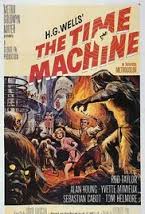 one will care about the specifics of time travel if the movie kicks enough ass. (Thanks to
one will care about the specifics of time travel if the movie kicks enough ass. (Thanks to  that future. Doc Brown mentioned it all through the Back to the Future series…”No man should know too much about their own future.” To see your place in it and then return to the present would require you make every decision the exact same way, but you couldn’t do that without knowing what they were. Dizzying, I know. Just imagine — if Abraham Lincoln really visited San Dimas, California in 1988 and then went back to 1863, do you really think he would’ve made the exact same decisions? Maybe he doesn’t even get assassinated…then what?
that future. Doc Brown mentioned it all through the Back to the Future series…”No man should know too much about their own future.” To see your place in it and then return to the present would require you make every decision the exact same way, but you couldn’t do that without knowing what they were. Dizzying, I know. Just imagine — if Abraham Lincoln really visited San Dimas, California in 1988 and then went back to 1863, do you really think he would’ve made the exact same decisions? Maybe he doesn’t even get assassinated…then what? Can you travel within your own lifetime, a la Sam Beckett in Quantum Leap? This would be the only feasible option. However, television neglects at least two main cause and effect dilemmas when doing this: there cannot be a return to present day, and the effect of a cause cannot cause the effect. More on that in a minute.
Can you travel within your own lifetime, a la Sam Beckett in Quantum Leap? This would be the only feasible option. However, television neglects at least two main cause and effect dilemmas when doing this: there cannot be a return to present day, and the effect of a cause cannot cause the effect. More on that in a minute. same children. The effect of changing the past was most successfully explored in the 2013 film About Time. Not only did it discuss the concept of how changing your own past will affect your children, but also how making small changes with the best intentions will inadvertently change your present in other ways. I highly recommend this movie, by the way. The conversations between Bill Nighy and Domnhall Gleeson, a father and son that are genetically able to alter their own past at will, are spectacularly heartfelt and worth the watch.
same children. The effect of changing the past was most successfully explored in the 2013 film About Time. Not only did it discuss the concept of how changing your own past will affect your children, but also how making small changes with the best intentions will inadvertently change your present in other ways. I highly recommend this movie, by the way. The conversations between Bill Nighy and Domnhall Gleeson, a father and son that are genetically able to alter their own past at will, are spectacularly heartfelt and worth the watch. The other neglected cause and effect dilemma is the “chicken or egg” problem of cause and effect theory, called a causal loop. In our normal timeline, stuff happens, which in turn causes other stuff to happen. The effect always happens after the cause. Time travel messes with that idea. When traveling backwards within your own lifetime and returning to the present, you would still exist, but you would still be a different you, no matter what you altered. The problem with that lies in the fact that you still need to perform the time travel procedure because if you don’t, it wouldn’t happen, and the timeline would not have been altered. However, if you are a different you, you may not have the need to travel back in time (this situation was brought to light in the 2002 version of The Time Machine.) Remember the possibility of George and Lorraine McFly living in a larger house with their three young children? Marty would probably not have met Doc, he wouldn’t have traveled back in time…you get the idea. The effect of the original timeline goes back in time and “causes the cause”, which creates a different effect. Therefore, the original effect doesn’t ever exist to cause the new cause. Head spinning yet?
The other neglected cause and effect dilemma is the “chicken or egg” problem of cause and effect theory, called a causal loop. In our normal timeline, stuff happens, which in turn causes other stuff to happen. The effect always happens after the cause. Time travel messes with that idea. When traveling backwards within your own lifetime and returning to the present, you would still exist, but you would still be a different you, no matter what you altered. The problem with that lies in the fact that you still need to perform the time travel procedure because if you don’t, it wouldn’t happen, and the timeline would not have been altered. However, if you are a different you, you may not have the need to travel back in time (this situation was brought to light in the 2002 version of The Time Machine.) Remember the possibility of George and Lorraine McFly living in a larger house with their three young children? Marty would probably not have met Doc, he wouldn’t have traveled back in time…you get the idea. The effect of the original timeline goes back in time and “causes the cause”, which creates a different effect. Therefore, the original effect doesn’t ever exist to cause the new cause. Head spinning yet?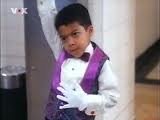 the Quantum Leap project in 1999, but what happens if Sam changes his timeline due to something as simple as sitting in his parked car for an extra two minutes to listen to Who’s Loving You, and the delay causes him to fatally step out into traffic at the wrong time in 1979? No Quantum Leap, no time travel, no Michael Jackson, so Sam would not have died, eventually creating time travel, and…we have a paradox. Don’t even get me started on John Connor’s future lieutenant from 2029 conceiving him in 1984, when he did not exist at that point. If John Connor did not exist in 2029, he would not have existed at all? Yeah, causal loops are bad news.
the Quantum Leap project in 1999, but what happens if Sam changes his timeline due to something as simple as sitting in his parked car for an extra two minutes to listen to Who’s Loving You, and the delay causes him to fatally step out into traffic at the wrong time in 1979? No Quantum Leap, no time travel, no Michael Jackson, so Sam would not have died, eventually creating time travel, and…we have a paradox. Don’t even get me started on John Connor’s future lieutenant from 2029 conceiving him in 1984, when he did not exist at that point. If John Connor did not exist in 2029, he would not have existed at all? Yeah, causal loops are bad news.
 Not as many people know how an ambivert acts during a conversation. For those not familiar with the term, here’s a frame of reference. Extroverts draw their power from interactions with others. It pumps them up, increases their confidence, and relaxes their tension. Introverts draw their power from within. The desire for solitude is overpowering, and when introverts find themselves in a group situation, it is draining. Confidence and energy are lowered, as though a video game is being played and the main character is getting destroyed. An ambivert, however, requires both types of environments to thrive.
Not as many people know how an ambivert acts during a conversation. For those not familiar with the term, here’s a frame of reference. Extroverts draw their power from interactions with others. It pumps them up, increases their confidence, and relaxes their tension. Introverts draw their power from within. The desire for solitude is overpowering, and when introverts find themselves in a group situation, it is draining. Confidence and energy are lowered, as though a video game is being played and the main character is getting destroyed. An ambivert, however, requires both types of environments to thrive. This morning, I found it exciting to go out and meet some new people (E). This group is for writers, so I expect from society’s generalization of writers that I will be dealing with introverts. No problem there (I). However, I’m not necessarily good at meeting new people because I never know what to talk about (I) without talking too much (E).
This morning, I found it exciting to go out and meet some new people (E). This group is for writers, so I expect from society’s generalization of writers that I will be dealing with introverts. No problem there (I). However, I’m not necessarily good at meeting new people because I never know what to talk about (I) without talking too much (E).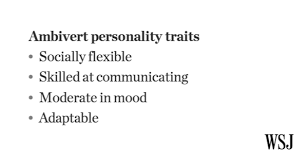 would generally be familiar with the idiosyncrasies of your favorite ambivert. The introvert in them will probably not be paying attention to the whole conversation, and any small talk you introduce will frustrate them. However, they will also likely talk your ear off if you hit the right topic, but that might be at the expense of your opinion. The introvert in them is pulling them away, and the extrovert is bringing them back in. Therefore, the conversation will unlikely be smooth, but it will be full of thought.
would generally be familiar with the idiosyncrasies of your favorite ambivert. The introvert in them will probably not be paying attention to the whole conversation, and any small talk you introduce will frustrate them. However, they will also likely talk your ear off if you hit the right topic, but that might be at the expense of your opinion. The introvert in them is pulling them away, and the extrovert is bringing them back in. Therefore, the conversation will unlikely be smooth, but it will be full of thought.